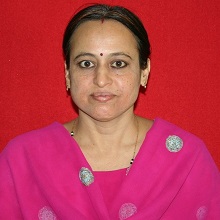About Us
The Extended range prediction (ERP) refers to the meteorological forecast beyond 10 days. It is the most difficult range of forecast as it lies between the short-range (where the effect of initial conditions dominate) and the long-range (where the boundary conditions dominate) and where the effect of initial conditions starts diminishing and the effect of boundary conditions have not started. However, this is an important time scale as it gives sufficient time for the disaster managers and various stakeholders in the agriculture, hydrology, power and energy sectors to their preparedness in averting adverse effects. Therefore, there is always a huge demand for accurate forecasts in this time scale.
Under the National Monsoon Mission (NMM) Project (Rao et al., 2019) of the Ministry of Earth Sciences (MoES), the Indian Institute of Tropical Meteorology (IITM) started ERP efforts in 2011 by adopting the Climate Forecast System (CFS) from the National Centre for Environmental Prediction (NCEP), USA. An ensemble prediction system (EPS) has been developed for the ERP by using an indigenous perturbation technique (Abhilash et al. 2013), which was later developed into a multi-model EPS. Several post-processing techniques have also been developed to improve the prediction skill of extreme weather events (Sahai et al., 2017; Ganesh et al., 2018, 2020). The EPS has remarkable skill in delivering an outlook on the intraseasonal fluctuations within the Indian summer monsoon, Madden-Julian Oscillation, heat/cold waves, cyclogenesis, and heavy rainfall events (Abhilash et al., 2013, 2014a,b,c, 2015a,b; Sahai et al., 2013, 2015a,b, 2017; Joseph et al., 2015a,b, 2016, 2019; Mandal et al. 2019; Dey et al., 2019; Ganesh et al., 2020), and this was adapted by India Meteorological Department (IMD) for operational purposes in 2016. Henceforth, these forecasts are used for generating the agricultural bulletins every week, which proved to be beneficial for farmers in increasing crop yield and choosing cost-effective crops (Chattopadyay et al. 2018). Health bulletins are also being generated by IMD using ERP guidance. An early warning system for the probabilistic prediction of vector-borne diseases has also been developed based on the ERP using AI/ML methods (Sahai et al. 2020).
In addition to these, efforts are now underway in generating the second-generation ERP (ERPv2) with a multi-physics framework for the improved prediction of the weather systems beyond 2 weeks (Sahai et al. 2021; Kaur et al. 2021). A competent set of physics pairs based on convection (simplified Arakawa Schubert SAS (Arakawa and Schubert 1974), revised SAS with modified shallow-convection (Han and Pan 2011), and microphysics (Zhao & Carr (Zhao and Carr 1997) and Ferrier (Ferrier et al. (2002)) schemes is selected to formulate a physics-based ensemble. The system with only control runs are showing great potential in the first three week leads. Therefore, for the ERPv2, we have three initial condition perturbed ensemble members (control + two) each for six multi-physics combinations, thus totalling 18 ensembles (3 initial condition perturbation X 6 physics perturbation). The experimental forecasts based on this new system, i.e., ERPv2, are now available and updated every Thursday on a real-time basis on this website, https://www.tropmet.res.in/erpas/.
Project Details
Developmental Activities:
Multiphysics Multimodel Ensemble Prediction strategy
In pursuit of achieving higher prediction skill for longer leads, the ERPAS group is working towards the development of a multi-physics ensemble forecast strategy.
The skill in a multi-physics framework depends on a compatible yet dispersive ensemble of various realizations of physical processes in the atmosphere. A competent set of physics pairs based on convection (simplified Arakawa Schubert and modified simplified Arakawa Schubert) and microphysics (Zao & Carr and Ferrier ) schemes is selected to formulate a physics-based ensemble. These physics combinations are analyzed for the spatial and temporal biases with a 15-year hindcast generated from the base model CFSv2. The through results from this work are published (Kaur, M., A.K. Sahai, R. Phani, S. Joseph, R. Mandal, A. Dey & R. Chattopadhyay Multi-physics schema for sub-seasonal prediction of Indian summer monsoon. Clim Dyn (2021). https://doi.org/10.1007/s00382-021-05926-2).
Further, the skill analysis was performed for the hindcast of the grand ensemble including the above-mentioned multi-physics ensemble in coupled CFSv2 and atmospheric GFS model. It has been found that the multi-physics multi-model ensemble performs better than the existing ERP system upto3 weeks for monsoon season. The skill is bettered by 2 days in capturing monsoon intraseasonal oscillations. Also, the improvement is extended up to subdivision levels and the predictability increment of 2-4 days is observed for many subdivisions. These results are reported as, “A.K. Sahai, Manpreet Kaur, Susmitha Joseph, A. Dey, R. Phani, R. Mandal, and R. Chattopadhyay. Multi-model Multi-Physics ensemble: A Futuristic way to Extended Range Prediction System. Frontiers in Climate, 2021 doi: 10.3389/fclim.2021.655919”
The efforts are further continuing to make the multi-physics ensemble more robust and enhance the skill of the system in the fourth week.
Project Highlight
Time line of development of IITM Extended Range Prediction System:
- 2011: Development of Ensemble Prediction System
- 2012: Bias Correction of CFS forecasted SST implemented
- 2013: High Resolution CFST382 implemented
- 2014: CFS based Grand EPS Implemented
- 2015: Forecast for winter and other seasons started
- 2016: Forecast for Heat Waves started, ERP System transferred to IMD
- 2017: Statistical Downscaling of ERP system for extreme event prediction
- 2020: Dynamical Downscaling of ERP system for extreme event prediciton
- 2021: Development of second generation ERP system (ERPv2) using a multi-physics framework
Development of customised forecast products for societal applications
- Prediction of Monsoon Onset over Kerala (Joseph etal, 2014, JClim)
- Prediction of Uttrakhand Heavy Rainfall (Joseph etal, 2014, ClimDyn)
- Prediction of June extremes (Joseph etal., QJRMS, 2015)
- Prediction of MJO (Sahai et al., 2016, IITM-RR; Dey et al. 2018, 2019, PaGeoph)
- Prediction of Heat waves (Joseph et al. 2018, IITM-RR; Mandal et al. 2019, SciRep)
- Prediction of Cyclogenesis (Ganesh et al., 2018, NatHaz, GRL; Ganesh et al., 2020, ESS; Ganesh et al., 2021, Mausam)
- Statistical downscaling of ERP system for extreme event prediction (Sahai et al., 2017, ClimDyn)
- Dynamical downscaling of ERP system for prediction of tropical cyclones (Kaur et al., 2020, ASL)
- Application of ERP system for the development of a probabilistic early health warning system (Sahai et al., 2020, SciRep)
- Application of ERP system in agricultural sector (Akhter et al., 2021, TAAC)
Team
Project: Monsoon Mission
Project Directors: Dr. Suryachandra Rao, Scientist-G
Deputy Project Director: Dr (Mrs) Susmitha Joseph, Scientist - F
Sub-Project: Extended Range Prediction










